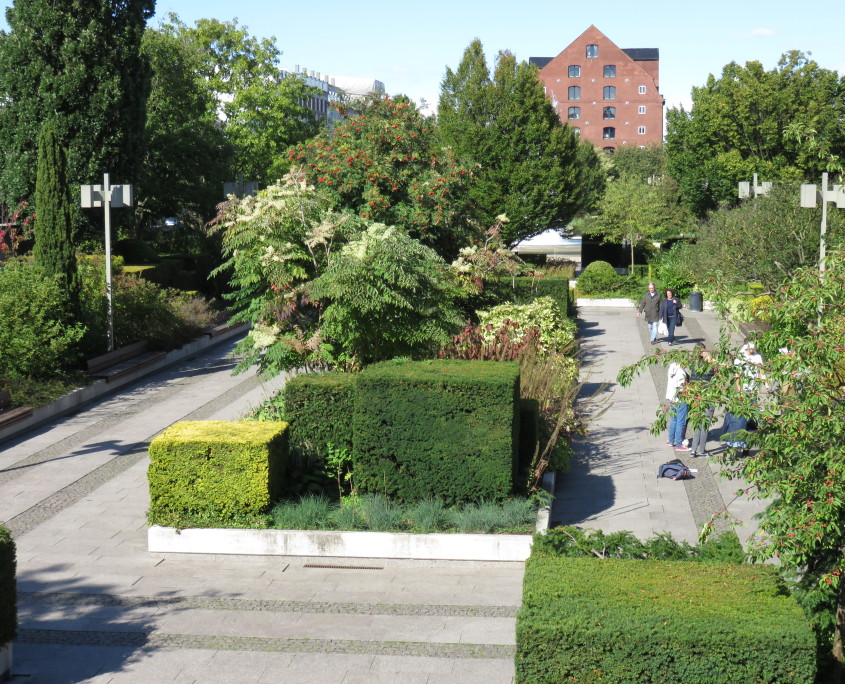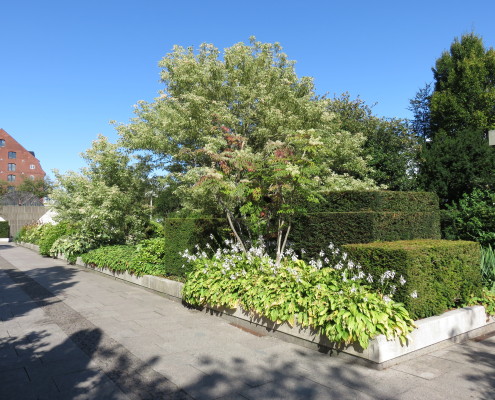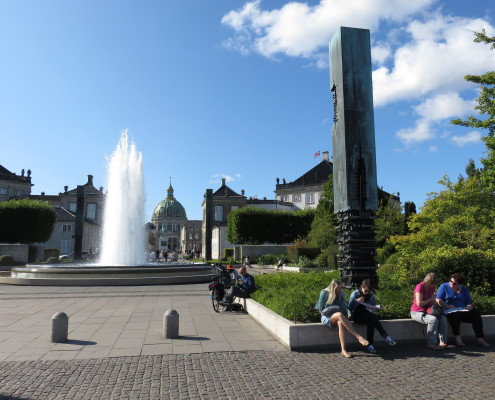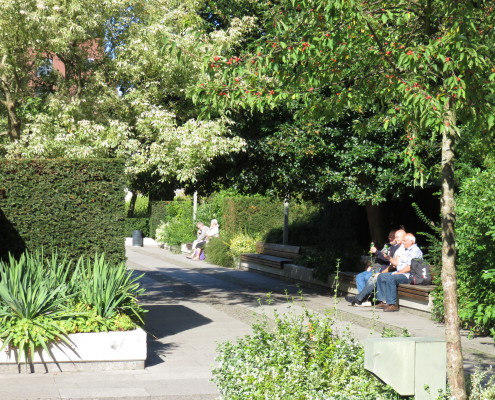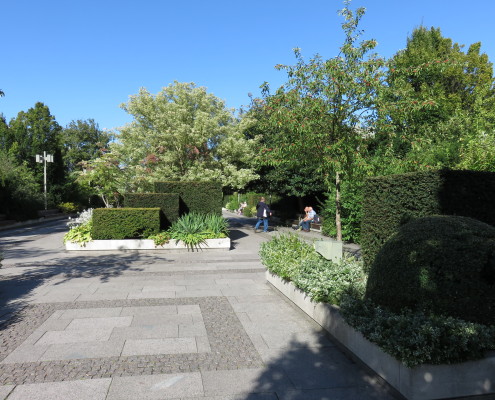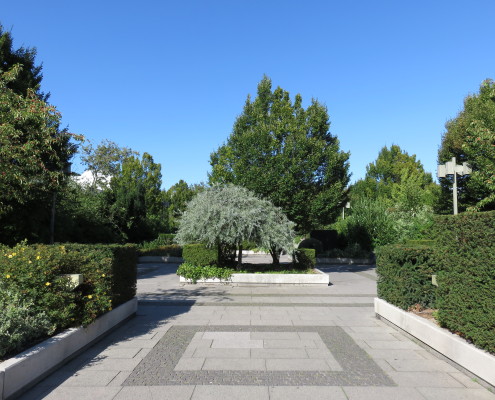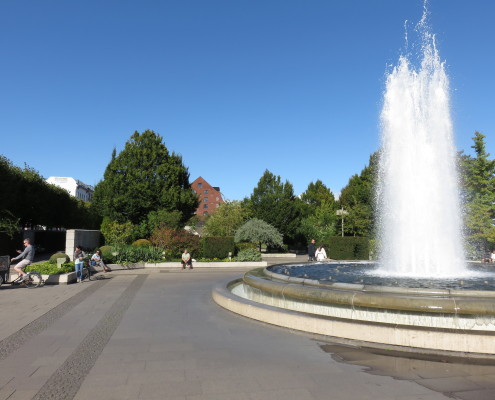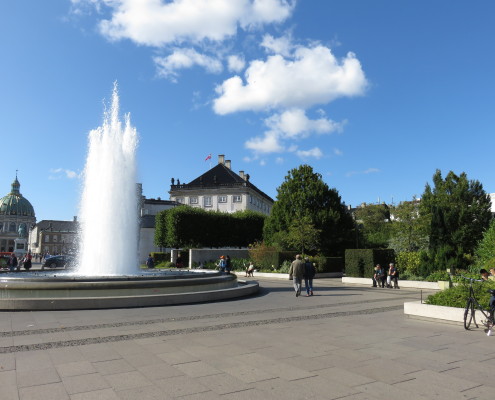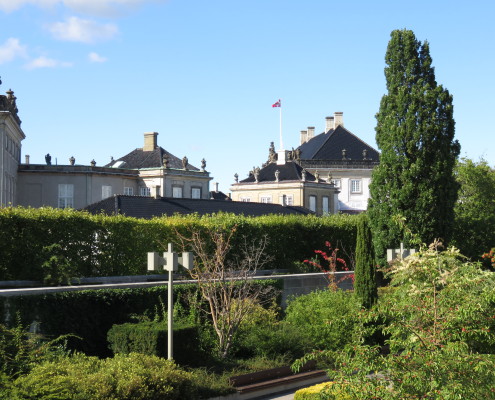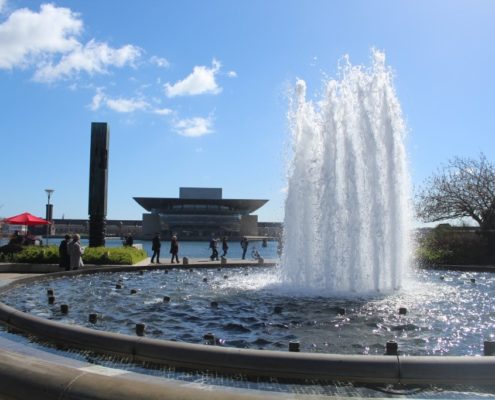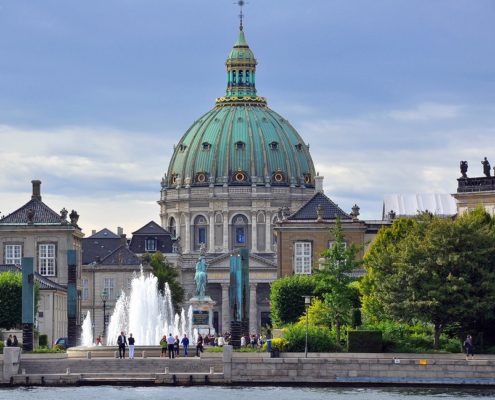Amaliehaven – The Amalie Garden
–
Amaliehaven (English: The Amalie Garden) is a small park located between Amalienborg Palace and the waterfront in the Frederiksstaden neighborhood of central Copenhagen, Denmark.
A relatively new park, it was established in 1983 as a gift from Mærsk Mc-Kinney Møller, who for many years led the A.P. Moller – Maersk Group, which was founded by his father.
The park is now part of the so-called Frederiksgade axis, the shorter but more distinctive of the two axes on which Frederiksstaden is centered.
Amaliehaven is located on a site where there used to be a shipyard established in 1802 by a wealthy ship-owner named Lars Larsen. The shipyard and its large lumberyard were situated right beside Amalienborg Palace and called “Larsen’s Place” since 1821.
In 1870 the shipyard was closed and a new port terminal was established at the site in 1879 by the Thingvalla Line which began operations of a direct route between Scandinavian ports and America which was to offer the growing number of Scandinavian emigrants affordable, comfortable, and safe voyages.
In 1898 the Thingvalla Line was acquired by DFDS, another Danish-based shipping company, and the Scandinavian-American passenger service was operated under the name Scandinavian America Line.
The route to America with Scandinavian America Line was discontinued in 1935 and the quay area was later taken over by the Oslo Ferries which started in 1866 and has since relocated to the Free Port Terminal further north.
The construction of the current park started in 1981 and it was inaugurated in 1983. The garden was designed by the Belgian landscape architect Jean Delogne.
Amaliehaven is a rectangular park built to a stringent, symmetrical design centered on a large fountain to respect and accentuate the Frederiksgade axis which unifies the entire area.
On both sides of the central fountain, the gardens continue on two levels, with shrubs and walls enclosing it from the waterfront on one side and the street on the other.
The garden abounds with different varieties of plants and fragrant flowers whose colors and natural shapes create a contrast to the geometrical layout of the park.
Japanese cherry trees, blooming in April, play a particularly distinctive role in the park’s vegetation.
The Italian sculptor Arnaldo Pomodoro has created various sculptures for the park, including four large abstract columns and two sun-like water features, which from each end of the park sprinkle with jets of water.

